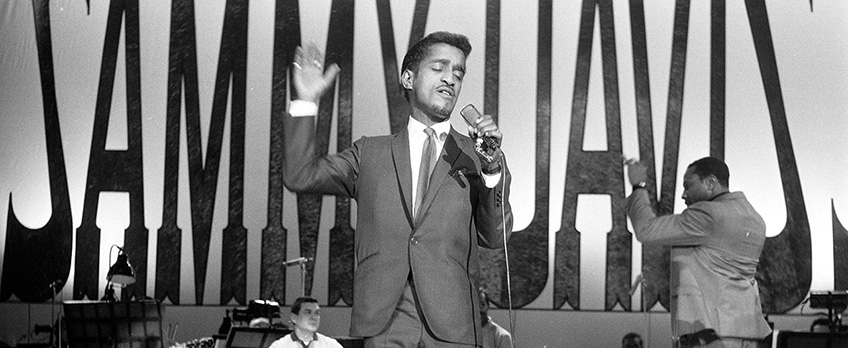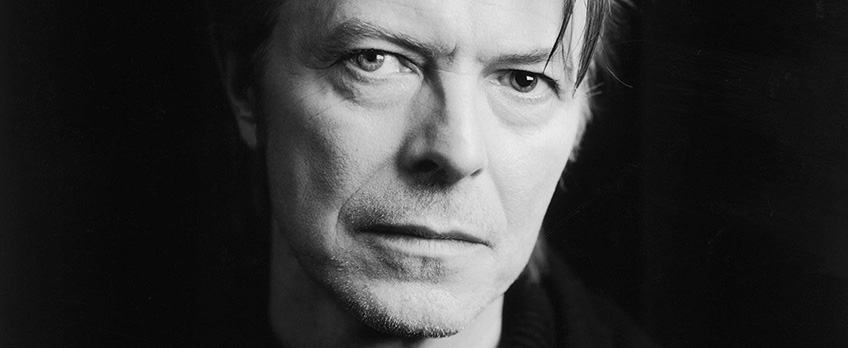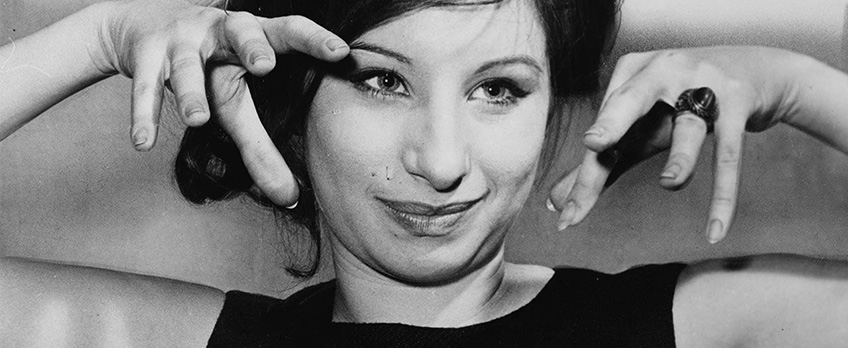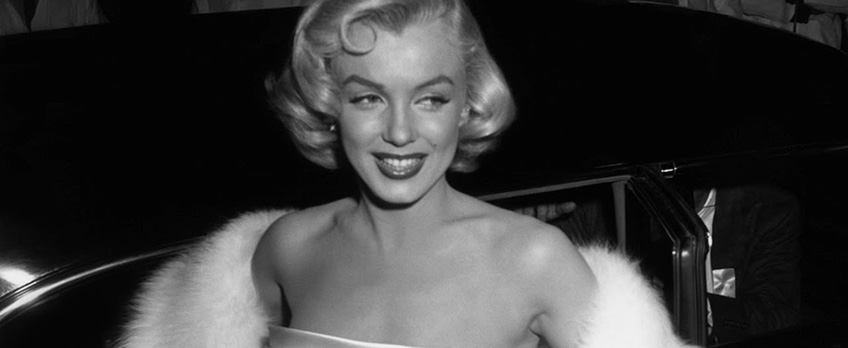Adrian Wootton Talks Musical Legends Q+A

Presented by MIFF 37ºSouth Market & Accelerator Lab, Adrian Wootton OBE returns exclusively to Melbourne for another series of his acclaimed Illustrated Film Talks, this year focusing on musical movie legends Sammy Davis Jr, Barbra Streisand, David Bowie and Marilyn Monroe. Here, he answers our questions about this year's lecture series.
Your lecture series this year focuses on the enthralling life stories and career highs of four unique stars, renowned for their acting talents in Hollywood as well as their musical talents on and off the stage. Historically, what has Hollywood’s relationship to the music industry looked like? And what factors contributed to the huge success of these stars?
The quartet of stars I am talking about this year in Melbourne have had different and hugely distinctive relationships with the film industry and all, including Marilyn Monroe, have had a significant recording careers.
Of course, from the beginnings of sound cinema, Hollywood realised that musical films and musical stars could give a new dimension to a movie's appeal so they created a whole new genre and started adapting theatre productions and importing their stars along with music hall / vaudeville / cabaret performers into the new films they were making. This is particularly exemplified by the case of Sammy Davis Jnr who literally grew up on stage as a child performer in musical halls of the 1930s and gravitated to cabaret, night clubs and then movies from Porgy & Bess onwards. This was also true of Barbra Streisand who went from singing in nightclubs in the early 1960s to Broadway, TV and then movies with Funny Girl. It was different for Monroe, who came through more conventionally as a dramatic actress in films in the 1940s, but as she became a star in the 1950s she revealed musical abilities that were developed and honed for the subsequent films she was cast in that were both straight dramas (River of No Return) and fully fledged musicals (Gentlemen Prefer Blondes).

And, of course, David Bowie is radically different from everyone else in so far as he was influenced by music and theatre but was already much more famous as a rockstar in the 1970s before he started to appear seriously in film and TV with things like Merry Christmas Mr Lawrence. And it’s true to say that Hollywood has often struggled with performers who are essentially “pure“ music stars, who have an established star persona, finding it difficult to mold them into actors who can convincingly inhabit characters that are not versions of their onstage image; but both Sammy Davis Jnr and Bowie overcame this perceived limitation.
Sammy Davis Jnr, the legendary African-American all-round entertainer, is one of the stars you highlight – in particular his career as both an entertainer and a civil rights champion. How did Davis help break down racial barriers in the 1950s and 1960s show buisness, and how has that shaped today’s industry?
Sammy Davis Jnr, aside from being amazingly talented, was a radical trailblazer for black musical performers and actors in the USA and indeed the world. His appearances on stage, in nightclubs, casinos, live arenas, TV and film broke taboos and opened doors to many artists who followed him. Moreover, his interracial relationships, his membership of the Frank Sinatra-led “Rat-Pack” and his explicit and avowed support for the US Civil Rights movement and figures such as Martin Luther King, saw him experience serous racism and discrimination. His success and bravery in overcoming all this made him a powerful and influential role model in the 1950s and 1960s. This is key to understanding Sammy, his life and career – and will be a key part of my talk about him.
Barbra Streisand and David Bowie are two more subjects in your lecture series. Many note Streisand’s activism and enduring legacy as a gay icon. Why does her work on and off the screen resonate so much within queer culture? And how would you compare her to a figure like Bowie – who has also made a huge impact on queer culture and fashion with his flamboyant, androgynous alter ego Ziggy Stardust?
With regard to Barbra Streisand, despite her incredible success as both a movie star and a recording artist, her influence as a groundbreaking role model is still not properly recognised. What she has achieved as a woman in the film industry is absolutely remarkable – managing to be a wholly original performer (and writer, director, composer and producer!) who, in defiance of stereotypical conventions about female beauty, ethnicity and class, made her appeal to audiences alienated from the airbrushed homogeneity of Hollywood. Also, with later films like Yentil, Streisand explores the question of sexual identity much more explicitly. I think this is at the heart of why she became a feminist icon (who else was doing what she was doing the 1970s and early 1980s?) and, I believe, why she has been adopted as an LGBTQI+ heroine. This is also enhanced by her vocal left-leaning liberal politics, where she has consistently championed gay rights in the US.
As far as Bowie is concerned, obviously his career and musical image is inextricably linked to androgyny, “camp” and queer culture from pretty much the beginning and his public appearances. His personal life reinforced this powerful influence on his life and work. Also, he and Streisand share that trait of being performers perceived as outsiders whose appeal, at least initially, was to the lonely, the alienated, the unconventional young people who didn’t fit into typical “norms”. I will be exploring their unique appeals in both of these talks.

Streisand famously cloned her favourite dog; is such eccentric behavior part of achieving iconic status?
We love to love stars who we can empathise with and relate to on an emotional level, but we also want them to be original, different from us, idiosyncratic and sometimes excessive. This is part of the allure of a star and whether it’s Barbra’s dogs, her homes, her art collection; Bowie’s many weird and wonderful adventures on and offstage; Sammy Davis Jnr’s wild ride with the Rat Pack; or Marilyn Monroe’s chaotic personal life – this is all part of their icon DNA, and part of why we are enduringly fascinated by these talented people. Of course, as people familiar with my talks will know, I do pepper them with a healthy smattering of anecdotes about the star’s most enthralling behaviour and this quartet will be no exception!
One of Streisand’s film musical roles was, of course, the 1976 adaptation of A Star is Born, which has been adapted once again with the release of Bradley Cooper’s version starring Lady Gaga. What do you make of two versions of the film? Do you see someone like Gaga as a contemporary iteration of the musical movie legend? And what is it about the present moment that has led to Hollywood resurrecting this genre of the movie musical?
Re-watching Barbra Streisand’s 1978 version of A Star is Born it’s fascinating to see not just how well it stands-up as a powerful drama but how gritty, tough and realistic it is about the music business in the 1970s. It’s very unsentimental and authentic and she and Kristofferson are brilliant, which considering it was vehemently attacked by critics and was a massive success against the odds, is a real achievement. Having said that, I do love the most recent version and thought Bradley Cooper as director and actor really pulled off something special. And Gaga is outstanding. So I think both versions deserve their place in the movie firmament but obviously I will be concentrating on Streisand’s version and her achievements in my talk about her.

The final subject of your series is the inimitable Marilyn Monroe, who is often remembered as a tragic figure. With so much access to the lives of contemporary celebrities via social media, do you see parallels between Monroe and more contemporary figures who struggle with addiction and/or mental health issues? In the #MeToo era, do you think we’ve learned to be more conscious of the wellbeing of women in the public eye?
We have to try and put aside the myths and cliches about Monroe and try to see her life and career more clearly and honestly. She suffered appalling misogyny and sexism – especially in her early career. Indeed, it’s incredible what she achieved against all the odds in a short space of time, with all those obstacles placed in her way and with the terrible psychological and emotional trauma she experienced as well as the addictions she combated. She was remarkably talented, much tougher and more independently minded than most give her credit for. This is a woman who fought the studios for creative control of her work and one of the first women to set up her own film-production company. And that is the story I want to tell alongside these other stellar performers.